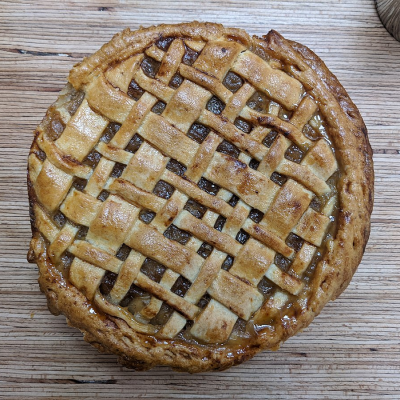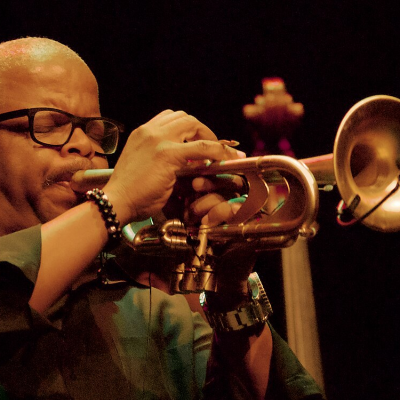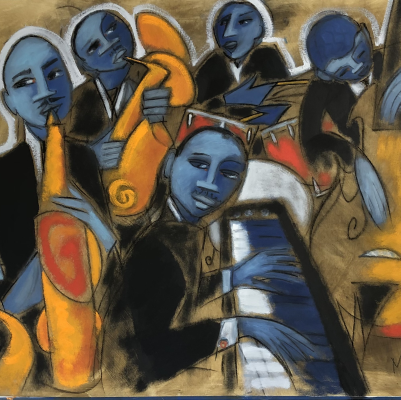.
.
“Nostalgia” was a short-listed entry in our recently concluded 66th Short Fiction Contest, and is published with the consent of the author.
.
.
___
.
.
Shisma, CC BY 4.0 via Wikimedia Commons

.
Nostalgia
by John-Paul Cote
.
…..Harlan felt panicked that far down the dark alley. Something scurried between his feet. His shoes stuck in God knew what. He felt like he was waiting to be knifed by a junkie looking for a few credits to feed his habit or arrested by the cops for just being there. There were the sounds of animals crying out and hissing. The smell of urine as some homeless guy pissed against the wall. Rats ran through the garbage looking for a meal. Harlan could hear someone coming up behind them but when he looked, nothing.
…..Police drones flew by, lighting up areas as they searched for criminal activity.
…..He was a clean-cut fellow dressed nicely. He had a good job. He had close friends and family. What was he doing? It was serious time for the stuff he was buying. He had seen enough of people like him getting caught and going away for forty to life.
…..But his needs ate at him. His addiction needed to be fed.
…..This was the kind of product destroying the nation, they said. Harlan didn’t care.
…..There were two other men. One was Walsh, his friend. The other man was Walsh’s ‘friend’, someone who could kill them and take what he wanted just as easily as give them what they wanted. Harlan’s connection had been nabbed by the law. Gone away for a long time, forty to life.
…..Harlan felt like he wouldn’t get out of here alive. This was not the setting he was used to dealing in.
…..His needs were eating at him, too strong to ignore, though.
…..The risk was worth it.
.
#
.
…..Harlan was at home in his apartment eating dinner. It was chicken and vegetables. But it wasn’t. It was, despite what they advertised, a near-flavourless meal with the texture of slices of rubber glued together.
…..It could drive you to suicide. It drove him to his addiction.
…..Harlan dumped his meal in the organic collector. He wasn’t hungry enough yet to eat that abomination to cuisine.
…..He walked to his bedroom and sat down. He barely remembered the flavours he enjoyed as a child. Harlan pulled out the old trunk his grandmother had left to him. It was vintage even by his grandmother’s time, a combination of aging plywood, rotting leather straps, and a patina forming over the bronze corners. The dust fell off as the hinges creaked when he opened it. There was a scent of her, a last touch of her perfume that had been trapped in a quilt on top that was now forever gone.
…..Harlan started sifting through the riches in it again has he had done night after night it seemed.
….. There it was. Gramma’s old cookbook. The cover was peeling. The pages were stained from all of those meals and desserts made from it. Harlan flipped through the pages, wishing to taste those seasonings, smelling those aromas again.
…..And then he saw it.
…..The recipe for Gramma’s apple pie.
…..It brought back memories of Gramma working with such patience and mastery, preparing the crust, and creating the filling. That aroma filling the house with the aroma of cinnamon and nutmeg. Harlan and his cousins trying to sneak a tiny bit of the flaky crust before anyone would know. It was family get-togethers on holidays and Sundays. Harlan always asked for as big a piece as he was allowed. It was his favourite.
…..The memories drove him to his addiction. It would drive him to that alley with Walsh.
.
#
.
…..“I’ve never seen someone who looks more like a cop,” the man in the dark alley said. “Walsh, what are you doing to me here?”
…..“Hey, I know the guy. He’s my friend. He’s a good guy. You can trust him.”
…..The man took out a device, turned it on, and moved it between Harlan and Walsh.
…..“Let me see the list.”
…..Harlan handed it over and the man scanned it.
…..“Most of this I got. Twelve hundred.”
…..“Twelve hundred credits?” Harlan said.
…..“What? You think this is corner store stuff? Do you have the credits?”
…..Harlan fumbled with the credits in his pocket. “Yes, right here.” He put them in the man’s hand.
…..The man disappeared.
…..The sound of an aerocar overhead made Harlan jittery.
…..Was that something moving at the end of the alleyway? He thought. He looked to Walsh for strength but only saw the same fear that he was feeling.
…..He should run.
…..But the need was too strong. He craved what the man had.
…..The man returned and handed Harlan a bag. Harlan opened it.
…..He could smell the cinnamon and nutmeg. There were bags of white crystals, the sugar he needed. Apples, grown in some exotic locale, no doubt.
…..“Butter,” Harlan asked, “Where’s the butter?”
…..“Hard to come by. What can I say?”
…..Harlan was about to protest but decided otherwise and started to say, “Thank you . . .” when drones filled the air. He could hear the footfalls as the man disappeared into the dark.
…..“Citizens. Freeze. Remain as you are,” the drone said. “You will be subdued if you do not obey.”
…..Harlan and Walsh ran. The stun bolts hit the wall and ground about them. They heard the sirens coming from the ground and the sky. They dashed into alleys and back into the street. The drones stayed with them. Police aerocars appeared over them. Spotlights were everywhere.
…..“FREEZE!” Came from behind them. “GET DOWN! GET DOWN!”
…..Harlan and Walsh turned around.
……“THEY HAVE GOT A WEAPON! THEY HAVE A WEAPON!”
…..“No wait!” Harlan yelled.
…..PUT IT DOWN! PUT IT DOWN! GET DOWN!”
…..The yelling confused Harlan. The lights blinded him. He looked to Walsh.
…..The first shot missed and sprayed Harlan with brick from the wall next to him. He turned and ran.
…..Harlan couldn’t hear Walsh holler no.
…..Whatever was happening, he held on to that bag.
…..Twenty years ago, they banned eating animals so everyone ate synthetic meat.
…..Next were mass-grown fruits and vegetables. They took up too much land and destroyed the local flora and fauna so again, synthetic produce.
…..Next salt and sugar were banned because of the health risks.
…..Finally, it was herbs and spices. They were limited to being grown in their native environments. Again, the concern for the flora and fauna that mass production interfered with.
.
#
.
…..Out of nowhere, the man from the dark alley jumped out into the street.
…..“HERE!” He said. As he fired at the police, he tossed Harlan a block of butter. “You get this done! For us!”
…..Harlan ran down an alley to another street, jumped on a bus, and slipped away.
…..Soon, Harlan slipped the unbaked pie into the oven. The aroma was heavenly as he waited. Minutes later, timer went off.
…..He pulled out the pie.
…..He cut a piece.
…..Once again, heaven.
…..As he savoured the taste, a light came through his apartment window. It slowly got brighter until he couldn’t see anymore. Voices started from someplace. He was confused.
…..The pie was so wonderful though.
.
#
.
…..“I’ve still got a pulse here, but he’s bleeding out. Get the EMTs!” An officer said.
…..Harlan laid on the street with two bullets in the left side of his head. Blood flowed everywhere.
…..The EMT shone a light in Harlan’s eyes.
…..“I’m not getting a response.” She said as her partner tried to bandage the wounds.
…..Walsh was on the ground, restrained. “What did you do? What did you do?” He screamed.
…..As he faded, the EMT looked at Harlan’s face.
…..“Is he smiling?”
.
.
___
.
.

John-Paul Cote lives in St. Catharines, Ontario with his wife and kids. His short stories have appeared on CommuterLit, Dark Winter Lit, and in the anthologies Beginnings & Endings, Journeys, and Live & Learn. Being a person of few words, he loves writing short stories and novellas.
.
___
.
.
Click here to help support the continuing publication of Jerry Jazz Musician, and to keep it ad and commercial-free (thank you!)
.
Click here to read “Not From Around Here,” Jeff Dingler’s winning story in the 66th Jerry Jazz Musician Short Fiction Contest
Click here to read more short fiction published on Jerry Jazz Musician
Click here to read The Sunday Poem
Click here for information about how to submit your poetry or short fiction
Click here for details about the upcoming 68th Jerry Jazz Musician Short Fiction Contest
Click here to subscribe to the Jerry Jazz Musician quarterly newsletter (it’s free)
.
.
.
___
.
.
Jerry Jazz Musician…human produced (and AI-free) since 1999
.
.
.



































